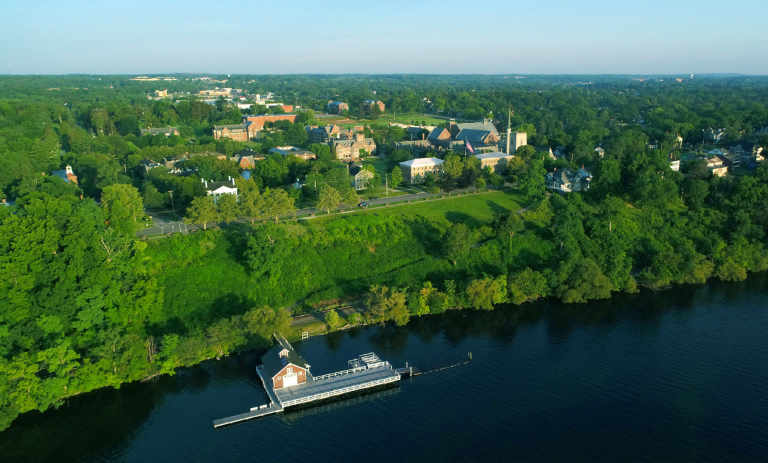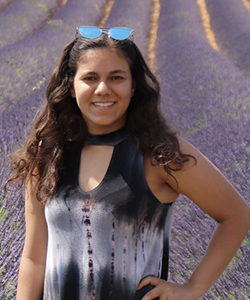
Student Research
julia bellamy '22, BE '23,
bachelor of engineering candidate at dartmouth college

"While I was in my senior year at HWS, I was working on two very memorable and distinct research projects. First, my Honors thesis project, "Image Analysis for Detecting Harmful Algal Blooms in the Finger Lakes" with my advisor Prof. Ileana Dumitriu was at the intersection of physics, environmental science, and data processing in the fast-developing field of remote sensing. In this project, I developed and applied an understanding of optics to several multispectral imaging formats and developed code to manage and analyze large amounts of data several on several variable axes the relationship between harmful algal blooms and their color characteristics in an image. After optimizing the calibration technique, it was found that there was a correlation between the presence of a harmful algal bloom in remotely collected images, which provides a novel and promising way to study and monitor these harmful blooms that are otherwise hard to study. This intensive honors experience was a lot of hard work and long hours, but I would do it all again because being able to propose, develop, design, and carry out my own independent research and follow through to a successful end goal has been invaluable.
My second project was with NASA's RockSat-C program, the only undergraduate program that allows students to design, engineer, and launch a research payload on a sounding rocket from NASA's Wallops Flight Facility. I designed relevant experiments to probe the atmosphere; developed circuits, software, and 3D models for all the subsystems; and managed the required debugging, platform integration, testing, and analysis of those subsystems. The last week of the semester was a mad dash to do last-minute checks that all the electrical and software components were working as the next time I saw it was with an awe-inspiring launch. The amazing rocket launch was only bolstered by having successfully collected data from all sensors - thermal and optical cameras, temperature probes, muon detectors, and spectroscopy. "
